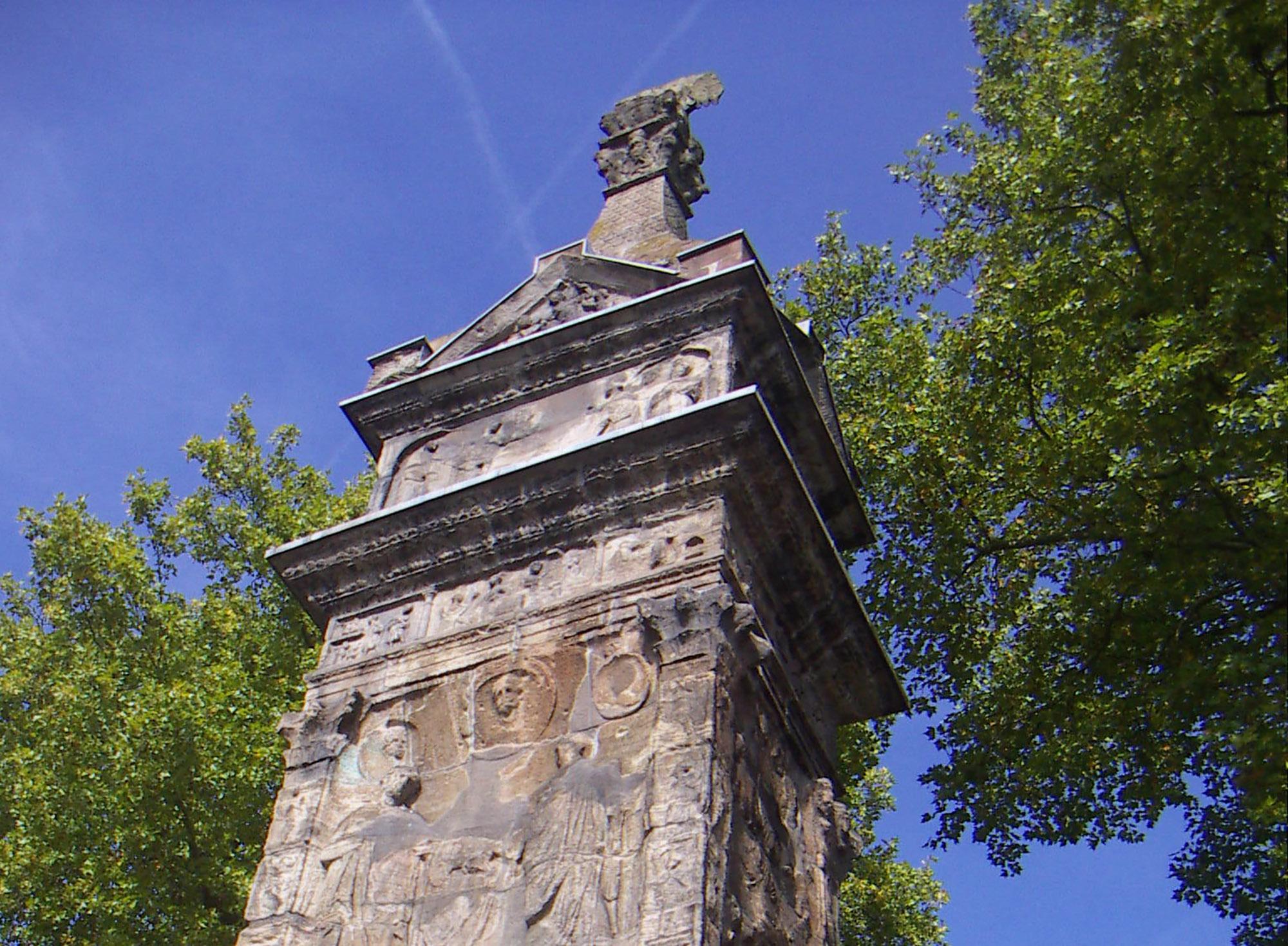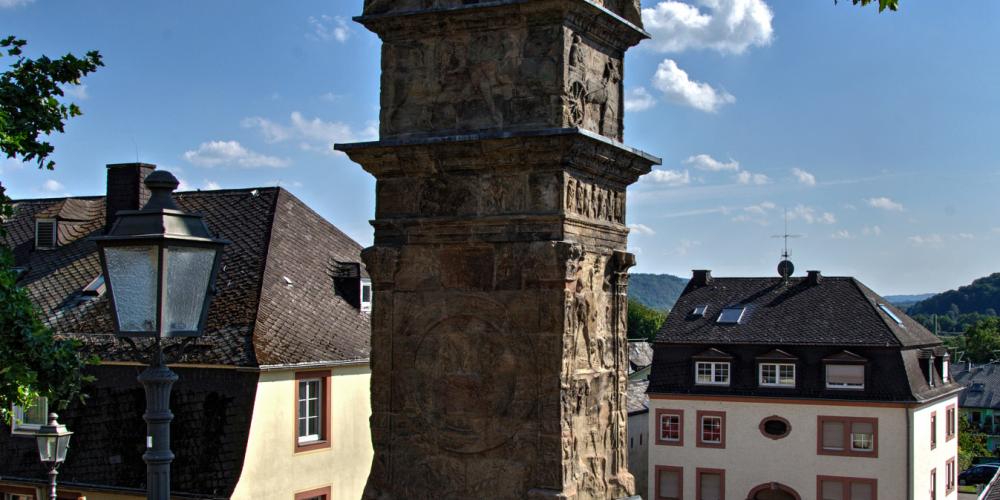Igeler Säule (Igel Column)

The Igeler Säule is the largest existing pillar tomb north of the Alps and has managed to survive to the present day due to a misconception in the Middle Ages. A family scene depicted on the grave was interpreted as showing the marriage of the parents of the Emperor Constantine, who was honoured together with his mother Helena as patrons of the Christian faith. This mistake ultimately prevented the Roman monument from being torn down by Christians.
The sepulchral monument to the Secundinier family was erected along a street close to the River Mosel around 250 BCE, thus displaying the wealth and success of this family of cloth merchants to every traveller up to the present day. The scenes depicted offer insights into the merchants' everyday existence and business life.

The date of origin of the pillar identifies it as one of the last of its kind—subsequently, the Roman city of Trier met with difficult times and its prosperity dwindled. The prestigious grave was an expression of the cloth merchants' entrepreneurial pride. The grave was attributed to the Secundinier family of cloth merchants, mainly because this trade was depicted on the pillar.
Over the centuries the pillar has been constantly exposed to the elements. The first structural reinforcement of the pillar grave took place in 1765. In the 20th century this was followed by the creation of a replica in artificial stone, because the original pillar was in absolutely critical condition. Attempts to prevent consequential damage to the original began in the 1980s. The replica pillar was coloured in 1993 based on traces of paint on the original, and it can be seen today in the Rheinisches Landesmuseum (currently surrounded by scaffolding).
Igeler Säule (Igel Column)
Always open
Free admission.

